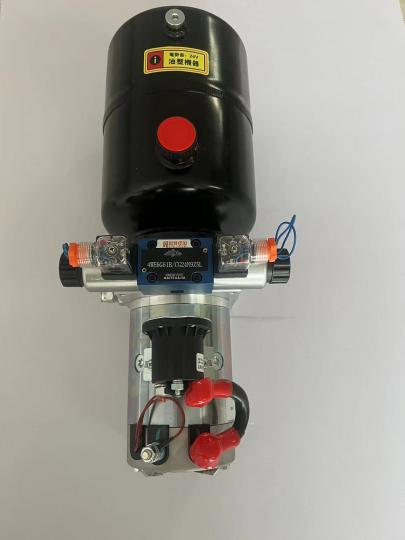Dec . 13, 2024 22:45 Back to list
Hydraulic Cylinder Wear Rings Manufacturing Process and Quality Standards
The Importance of Wear Rings in Hydraulic Cylinders A Focus on Manufacturing
Hydraulic systems play a crucial role in various industrial applications, providing the necessary power to move heavy machinery with precision and efficiency. At the heart of these systems lies the hydraulic cylinder, which converts hydraulic energy into mechanical force. One of the critical components of a hydraulic cylinder is the wear ring, an often overlooked but vital factor in ensuring the longevity and effectiveness of the cylinder.
What Are Wear Rings?
Wear rings are designed to reduce friction and wear between the piston and the cylinder barrel. They are circular polymer or metal components that act as supportive guides, helping to maintain the alignment of the piston while also absorbing the impact of movement. Depending on the application, wear rings can be made from a variety of materials, including nylon, PTFE, or bronze, each selected for its specific properties suited to different operational conditions.
The Role of Wear Rings in Hydraulic Cylinder Performance
The primary function of wear rings is to minimize the wear that inevitably occurs between moving parts in a hydraulic system. This wear can lead to several issues, including loss of efficiency, increased operational costs, and ultimately, equipment failure. By providing a buffer, wear rings help maintain a tight clearance between the piston and cylinder wall, reducing the potential for hydraulic fluid leakage. This not only ensures optimal pressure retention but also helps maintain the hydraulic fluid's performance over time.
Moreover, wear rings assist in the guiding action within the cylinder. When a hydraulic cylinder operates under high pressures or in demanding conditions, the stresses can cause the piston to wobble. This wobble can lead to uneven wear and piston misalignment, affecting the cylinder's overall reliability. Wear rings serve to stabilize the piston, allowing for smoother operation and extending the lifespan of both the piston and the cylinder itself.
Manufacturing Considerations for Wear Rings
wear ring hydraulic cylinder factory

The production of wear rings involves several critical factors, as they must be designed to withstand the operational environments they will encounter. Manufacturers must consider factors such as load capacity, temperature fluctuations, and exposure to various chemicals when selecting materials for wear rings.
Precision manufacturing processes are essential for creating wear rings that fit perfectly within hydraulic cylinders. Any discrepancies in dimensions can lead to significant operational issues, including increased friction and premature failure. Advanced technologies such as CNC machining and 3D printing are increasingly being utilized to achieve the precise tolerances required.
Furthermore, the manufacturing process must also ensure that the wear rings possess the right balance of hardness and flexibility. Harder materials may resist wear better but can become brittle, while softer materials may wear down quickly but offer greater resilience. Finding the right combination for a given application is crucial for optimizing the performance of the hydraulic cylinder.
Quality Control and Testing
Quality control is an integral aspect of manufacturing wear rings. Each batch of wear rings must undergo rigorous testing to ensure that they meet industry standards. This includes assessments for dimensional accuracy, material integrity, and performance under simulated operational conditions. Manufacturers may also conduct longevity tests to evaluate how wear rings hold up over extended periods of use.
Conclusion
In summary, wear rings in hydraulic cylinders are essential components that significantly impact the efficiency and longevity of hydraulic systems. Understanding their role in reducing wear, guiding piston movement, and maintaining hydraulic integrity is crucial for manufacturers and end-users alike. With advancements in materials and manufacturing technologies, the quality and performance of wear rings continue to improve, leading to more reliable hydraulic systems in diverse industries.
Investing in high-quality wear rings from a reputable hydraulic cylinder factory not only enhances operational performance but also minimizes maintenance costs, thereby providing long-term benefits. As industries evolve and demands grow, wear rings will remain a focal point in the optimization of hydraulic cylinders, ensuring that they continue to meet the rigorous standards required for modern applications.
-
Fork Lift Power Units - Hebei Shenghan | Efficiency, Reliability
NewsJul.13,2025
-
1.5-Ton Turbocharged Cylinder-Hebei Shenghan|Hydraulic Solution,Energy Efficiency
NewsJul.13,2025
-
Auto Hoist Power Units-Hebei Shenghan|Efficiency&Industrial Lifting
NewsJul.13,2025
-
Double Acting Power Units-Hebei Shenghan|Hydraulic Solutions,Industrial Efficiency
NewsJul.13,2025
-
1.5 Ton Lifting Cylinder 70/82-40-290-535 - High-Performance Hydraulic Solution | Hebei Shenghan
NewsJul.13,2025
-
Fork Lift Power Units - Hebei Shenghan | Efficiency&Reliability
NewsJul.13,2025
